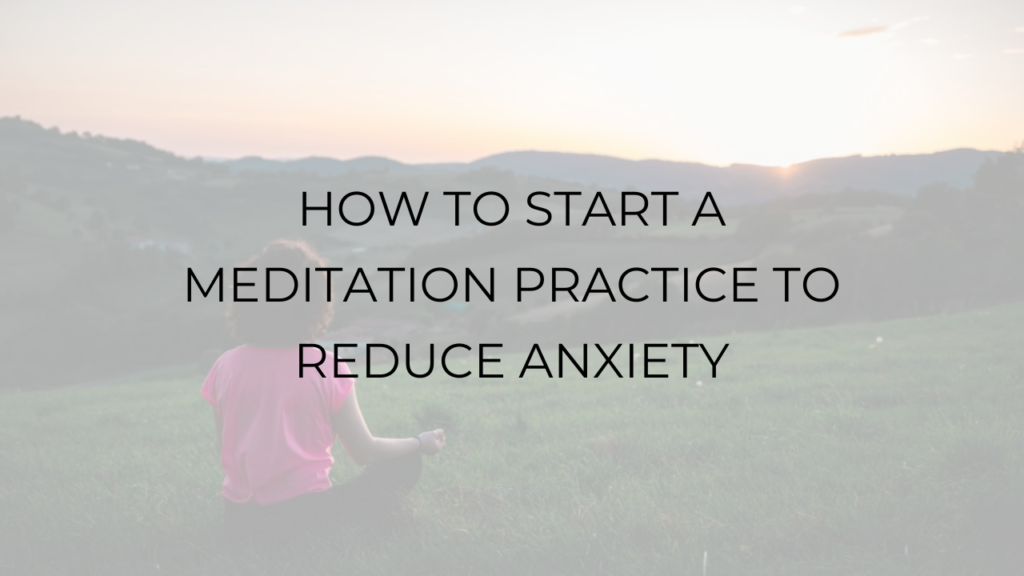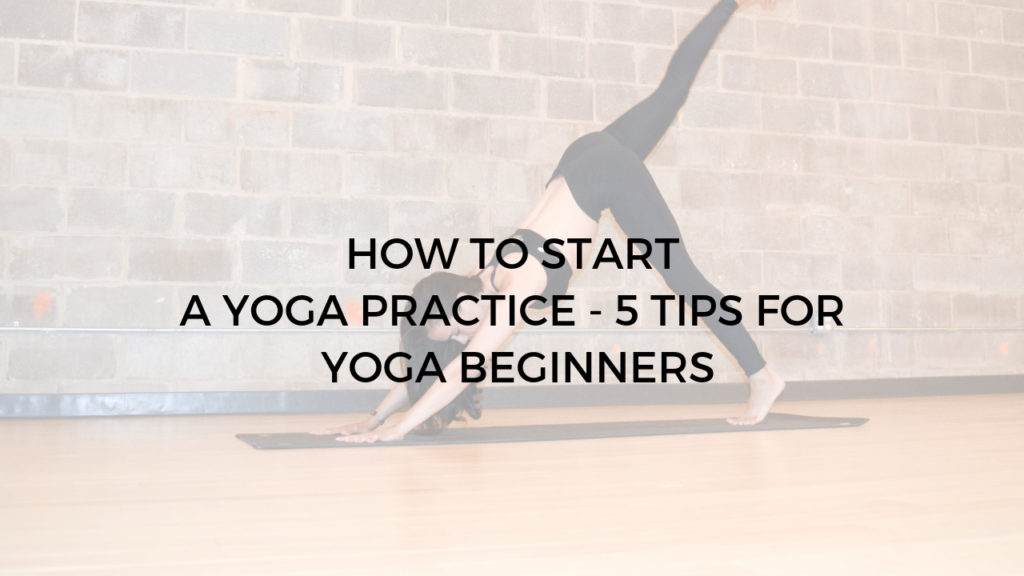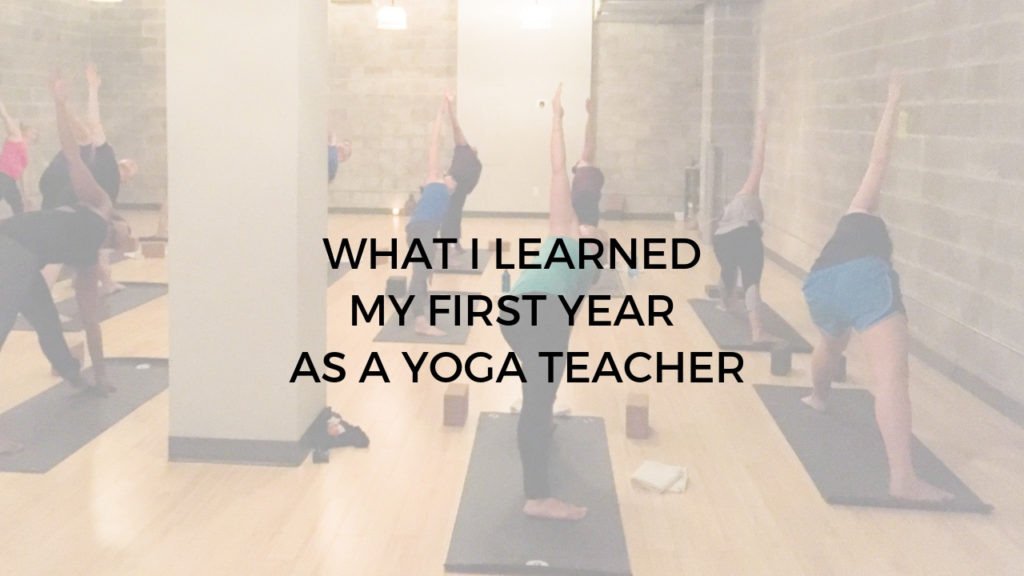Raise your hand if you’ve heard any of these before, either from yourself, or someone else:
“I have too much anxiety so I can’t meditate.”
“I can’t be still so I don’t meditate.”
“Meditation is too hard.”
“Meditation is not my thing.”
“I can’t quiet my thoughts.”
“I don’t have time to meditate.”
“I’m a New Yorker, so I can’t slow down.”
“If I slow down, I won’t get things done”
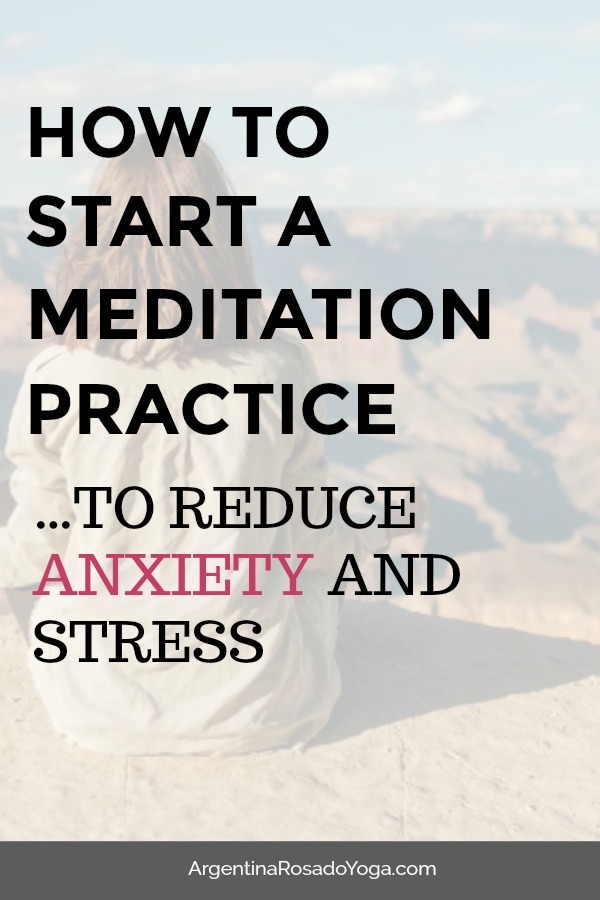
Do any of those sound familiar?
You see, after years of leading meditation classes, and trying to get people to meditate, I can tell you that I’ve heard those statements (or should I say, excuses?) far too many times.
In fact, it usually goes a little something like this:
They come to meditation class.
They try it once.
And then they never come back.
After it doesn’t workout for the first time, they immediately make the decision that meditation is not for them, and never try again.
Am I right?
But here’s the truth…(and this is a truth I wish everyone could understand…)
Ready?
Meditation is hard for E-V-E-R-Y-O-N-E!!!!!!
Please repeat that as many times as you need to in order to understand it.
Meditation is hard for E-V-E-R-Y-O-N-E!!!!!!
Not just you…
There are monks and gurus out there waking up at 3 am, meditating 4+ hours per day, seven days a week. Now, would they be spending that much time on meditation if it was easy? Probably not.
Yes, if you suffer from anxiety, then you’re more likely experience restlessness and discomfort when you try to sit still. But that doesn’t mean that meditation is not for you.
If you suffer from anxiety, and you want to start meditation, then you need to practice tools and techniques that are specific for anxiety.
In the same way…
Someone with depression needs special tools and techniques of meditation.
Someone needing more energy needs special tools and techniques of meditation.
Someone needing more sleep needs special tools and techniques of meditation.
And so on…
Ok, here’s another thing…
Ready?
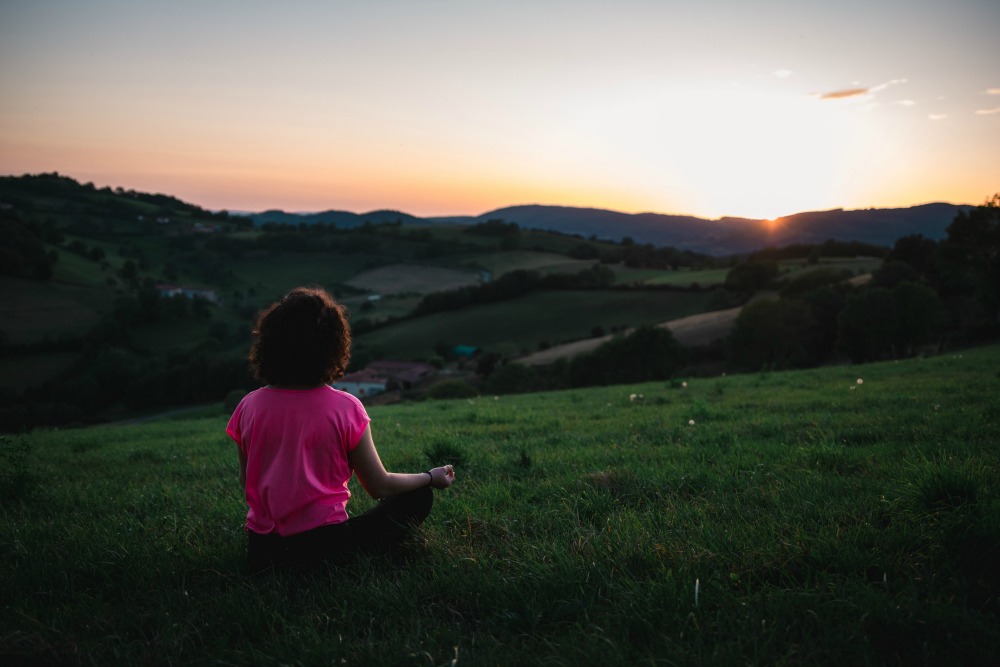
A big reason why so many people struggle with meditation, and eventually quit, is that they have the wrong idea of what meditation is.
What “wrong idea” am I talking about?
Well, the idea that meditation is a practice of quieting our thoughts.
Most people think they’re supposed to empty out their thoughts during meditation, so when they try it and it doesn’t happen, they quit.
But meditation is actually the practice of effortlessly being present with our thoughts. Or, the practice of effortlessly concentrating on one point.
Yes, you might see that definition worded differently depending on who your teacher is, or where you’re reading it from, but that’s the main idea.
Now, the keyword here is effortlessly. A concept I get into much more detail in my “5-day yoga for anxiety” challenge.
Definitely sign-up for that challenge if you’re interested in learning more on how to start a meditation practice while reducing your anxiety.
For now, here are my top five tips for starting a meditation practice you can stick with, while reducing your anxiety and stress.
1. Move Your Body First
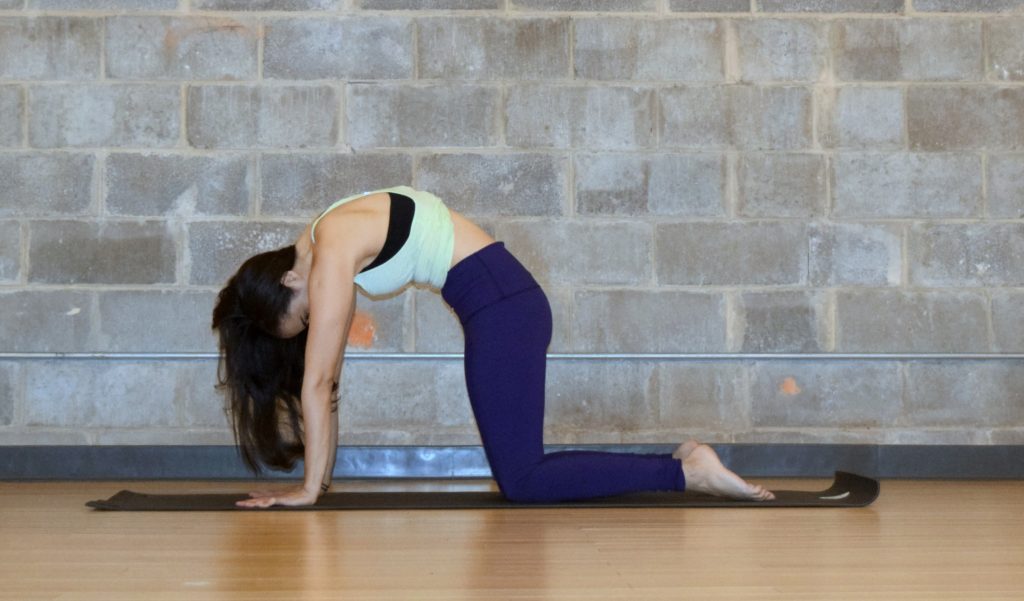
Sitting still can be challenging for anyone. This is because our bodies are meant for movement, and our minds for thinking. So when we ask our bodies to be still, all of a sudden, it won’t necessarily be easy.
Now, sitting still for someone with anxiety? Yea, twice as hard. A person with anxiety is already experiencing restlessness and hyperactivity in both the mind and body, so trying to be still will definitely bring out some resistance and frustration along the way.
But let me ask you something…what’s the opposite of stillness?
Yep, movement.
So before asking your body to be still, be nice to it and give it a little movement.
Moving the body will not only help shake off some of the restlessness and hyperactivity, but it will also help to calm the body and mind, which will help bring you closer into stillness.
Now, what kind of movement you ask? Well, anything goes. The key is to keep it mindful.
And guess what? It doesn’t even have to be yoga. Yes, yoga poses can certainly help calm the mind, and ease physical tension, which takes you closer into stillness, but it can be anything.
You can go for a walk or a run. You can do your favorite exercise. You can put on your favorite song and start dancing.
You can keep it simple with Cat/Cow Vinyasa and a good ol’ downdog.
The point is to move your body, shake off some restlessness, and gradually ease the body and mind into stillness.
So the first step is to move the body.
2. Calm the Breath
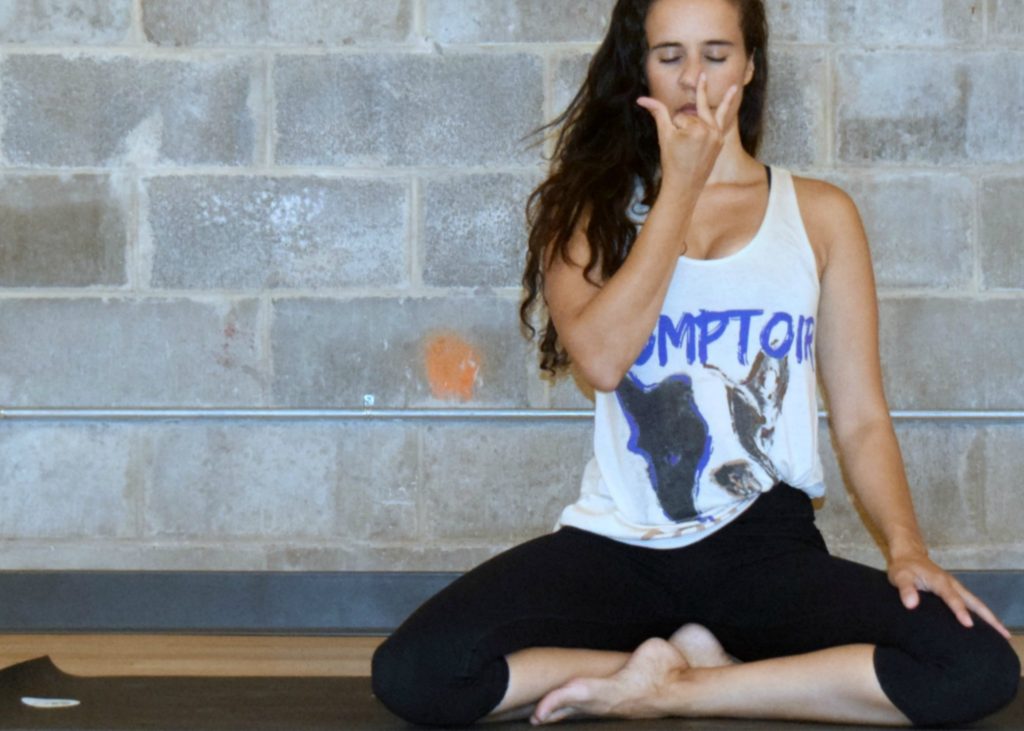
After moving the body a bit, go deeper into stillness with a breathing exercise.
This, right here, is huge, very huge. You see, the breath, the mind, and the body are always connected and in sync with each other.
So for example, if the mind is stressed, you will see that reflected in your body (i.e. muscle tension, curling up, etc.). In the same way, if the mind is stressed, you will also see that reflected in your breathing.
This also works the other way around. If the breath is calmed, the mind, and body, will also be calmed.
So to ease the body and mind into stillness, calm the breath first. You can do something as simple as a “breath awareness” exercise where you actively focus on the natural flow of breath.
Or, you can go a bit deeper with alternate nostril breathing technique which helps to balance the inhales and exhales and create a sense of centeredness and grounding.
3. Have a Plan First

One of the biggest challenges when it comes to meditation is not knowing where to start. With so many meditations out on the internet, it can be an overwhelming task trying to pick the best ones for you.
But here’s the thing…
A key to staying consistent with your practice is to have a plan laid out. Before you start, know which meditation you’re going to be doing everyday. Or if you want to do a different one each day, or each week, have those picked out in advance too. This will avoid the overwhelming task of having to search for a new meditation everyday or week.
Another thing you can do is join a meditation program that will have everything set-up for you. There are challenges that run from 7 days to even 90 days. For example, my blissful mind meditation program runs for 21 days and you get your meditations daily in your inbox so you don’t have to even login anywhere to practice. Definitely check that out here.
4. Start Small
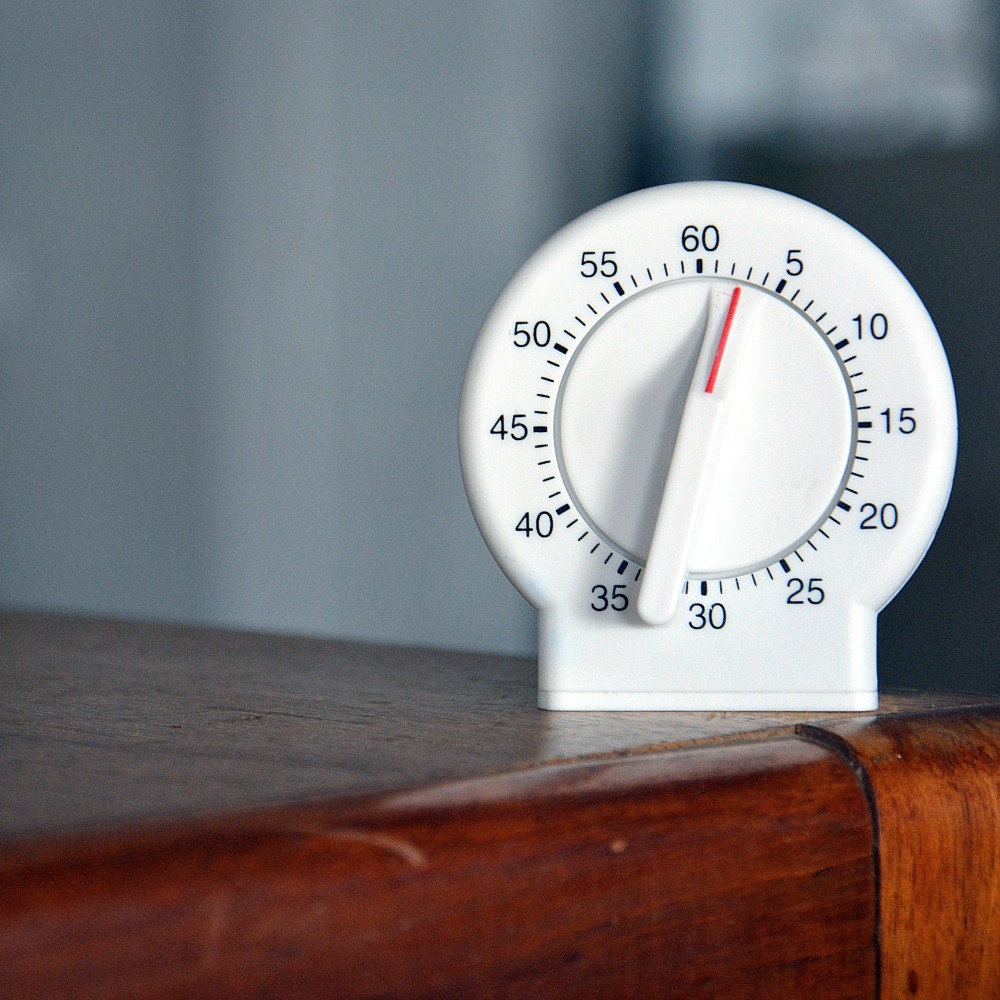
If you’re training to run a 30k mile marathon, you don’t start your practice by running the 30k right off the bat, right? No, you start with 1 or 2 or 3 miles, then work your way up.
It’s the same thing with meditation. You want to start as small as possible to avoid overwhelm and to keep your practice going. When you’re meditating, you’re basically training your mind to concentrate, first actively, then effortlessly. It’s a process. And it’s important not to rush it.
If you’re just starting out, I recommend starting with as little as 1-5 minutes per day. You can then work your way up as you see best.
But keep it small. There’s no rush to get anywhere.
5. Practice the Four Stages of Meditation
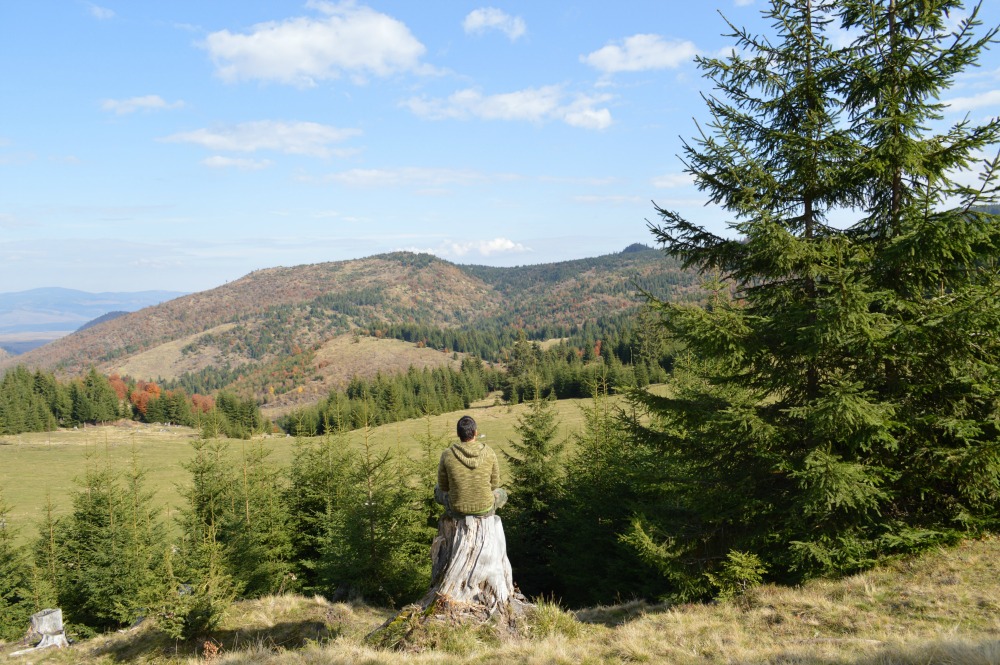
Remember I mentioned that meditation is the practice of effortlessly concentrating and that we must gradually make our way there? Well, the key to training the mind to effortlessly concentrate is to practice the four stages of meditation. Actually there are five.
- Move the body
- Calm the breath
- Practice inner observation
- Practice active concentration
- Practice effortless concentration
That’s it. Those are the five stages.
I’d love to go deeper with you on this. So make sure to sign up for my weekly LIVE masterclass:
The five stages of meditation: the key to starting and keeping your meditation practice, while reducing your anxiety without the frustration and overwhelm.
